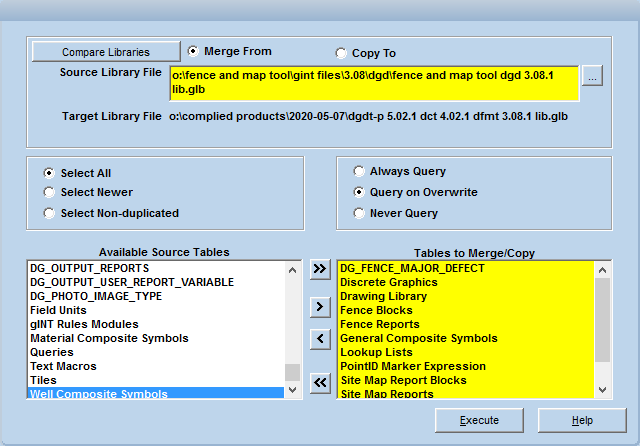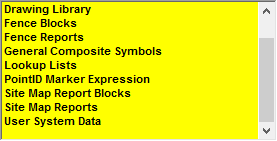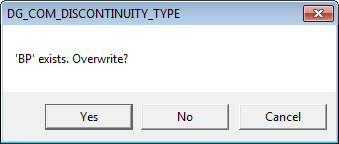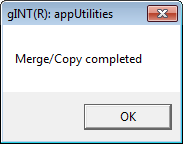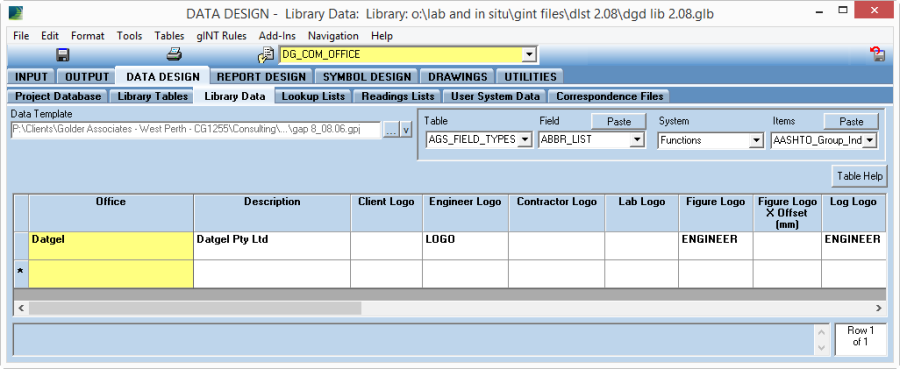Installation and Licensing
Overview
There are four parts to the implementation process:
- Install Datgel Toolbox program
- Licensing
- Merge gINT library objects
- Merge project fields
Download Datgel Fence and Map Tool
Download the Fence and Map Tool package and Datgel Toolbox installer from datgel.com.
- Full version: https://www.datgel.com/customer/downloadableproducts
- Trial version: https://www.datgel.com/trial-software
Package Contents
The product package download which normally has the following folders:
- \gINT Files
- \Documentation
Extract the zip now.
Install Datgel Toolbox
Before Installation
A few basic preparations can help ensure an effortless installation.
- Make sure that the computer where you plan to install the program meets the minimum hardware and software requirements.
- Connect your PC to Internet before installation (the process may need a working Internet connection).
- The Datgel Toolbox program requires that the Microsoft .NET 4.8 framework is installed on the PC prior to the installation of the Tool. If your PC does not have this, then it will be automatically downloaded and installed during the Tool installation process.
- Log into the PC with Administrator privileges before starting installation.
- It is recommended that you exit out of other applications that maybe running on your PC.
- Close gINT before you start installation.
Installation
- Run the installer, typically named Datgel.Toolbox.20##.#.#_YYYY-MM-DDTHHmmss.exe.
- When you come to the Components screen, be sure to select this product, or you can simply install all Components.
- The gINT*.exe.config files for gINT versions V8i and 10..# are edited by Datgel software during installation.
Datgel Licensing
Before Merge
If this has been already done by Datgel or a colleague, you can skip this section.
A few basic preparations can help ensure an effortless implementation.
If you're in one of the following situations, then your gINT files have been set up already and you may proceed to Using Fence Reports.
- In the trial version of the Fence and Map Tool, the library will be locked and you cannot merge any gINT Library Objects into your Library file, or make changes to this Library file. In this case, you have to use the locked library as-is.
- Steps described below have already been completed by Datgel's developers, yourself or a colleague.
If you don't have existing gINT files then we recommend you purchase the Datgel DGD Tool Professional product.
Merge gINT Library Objects
If you have purchased the DFMT, then you have full access to the library objects, and you may proceed with the following steps to merge the gINT Library components into your Library file.
Make a backup copy of your existing library file. By default, this is located at:
C:\Users\Public\Documents\Bentley\gINTCL\libraries\IMPORTANT: If you are not already using a DGD Tool type database and associated library then you should purchase the DGD Tool too.
When you proceed to step Choose and Implement a Project Database Structure you must select the standardised DGD type database and associated library. If you do not, the Datgel Fence and Map tool will not work correctly.- Start gINT and open the library and project file you wish to use with DFMT. The current project and library files are displayed at the top of the gINT Window.
- You probably have some existing fence reports and related objects in your library. Often it is best to delete these so you don't have a mixture of old and new items.
- Go to REPORT DESIGN | Fences, and Blocks > Edit Log Blocks, click on the list button and delete all items that don't start with DG CPT *
- Go to REPORT DESIGN | Fences, click on the list button and delete all items that don't start with CPT*
- Go to REPORT DESIGN | Site Maps, and Blocks > Edit Site Map Blocks, click on the list button and delete all items
- Go to REPORT DESIGN | Site Maps, click on the list button and delete all items
- Go to DATA DESIGN | Library Tables, delete items named like DG_FENCE* and DG_MAP*
- Go to DATA DESIGN | Lookups, delete items named like DG_FENCE* and DG_MAP*
- Go to DATA DESIGN | User System Data, delete items named like DG Fence* and DG Map*
- Go to SYMBOL DESIGN | Discrete Graphics, delete items named like DG FENCE*
- Select UTILITIES | Lib Merge/Copy.
- Check the bullet that reads Merge From.
- In the Source Library File pane, browse the extracted ZIP files for Datgel Fence and Map Tool lib #.##.glb where #.## is the version number.
- Check the bullet that reads Select All.
- Check the bullet that reads Query On Overwrite.
- Click the single arrow button to move selected tables from the Available Source Tables pane on the left to the Tables to Merge/Copy pane on the right side. Do not merge everything
- Click Execute. This process may take several minutes to complete.
Take care to read the overwrite dialog and click Yes if you wish to overwrite the file, ELSE click No. Generally, don't overwrite items shared with other Tools, unless it is primarily a fence or map item.
This will merge in the reports, lookup lists, and other library objects which are related to the Tool.
For Drawing Library be sure to merge Page size layouts A1 to A3, LETT and 11x17
For General Composite Symbols only merge: GNRL!CONCRETE - Click OK to finish the merge.
Merge Library fields
Merge fields:
- DG_PROJ_OFFC.Figure_Logo_X_Offset
DG_GEOL_ORG.Order
DG_GEOL_BGS.Order
Merge project fields
Fields have been added to support DFMT reports. First check if the field exists in your project, and if so you can skip this section.
Fields can be merged following this procedure:
- DATA DESIGN | Project Database, and open your development project file
- Merge the following fields
- DGD: DEFECTS.Fence_Major_Defect
- Go the the target table e.g. DEFECTS
- Select Tables > Merge fields from other file...
- Select the DFMT project: fence and map tool <dgd or ags rta> #.##.#.gpj
- Select the source table e.g. DEFECTS
- Select field e.g. Fence_Major_Defect
- Click OK
Adding the CPT Tool fence stick
After merging the CPT Tool and Fence and Map Tool into the same library, then:
- Set User System Data DG Fence Integrate CPT Tool to = -1
- Go to a REPORT DESIGN | Fence, and open CPT FENCE A3L.
- Select File > Page > Copy Report Variables, and then select all lines from Width 3 down to bottom of list. Click OK.
- Select the report FENCE A1L, and click OK.
- Go properties of FENCE A1L, and launch the User Report Variables. Edit URV qc qt Max Scale and qc Rf Plot, remove lookup reference and set value to <<To Delete>>.
- Click OK and OK.
- Select File > Page > Copy Report Variables, and then select qc qt Max Scale, qc Rf Plot and all lines from Width 3 down to bottom of list. Click OK.
- Select the fence reports named like FENCE* and MAP* apart from FENCE EXPORT NO CPT TOOL, and click OK.
Configuring Logos in the Library
Import a new raster file
Logos images are managed from SYMBOL DESIGN | Bitmap Symbols. You can store many different logos here, each having its own page. Non logo images can also be stored here.
Make a new Bitmap Symbol
- Create a new page
- Enter the Name and Description.
- Using the Load Raster File browser, select the file you wish to import, and click OK.
Replace existing Bitmap Symbol with a new image
- Select the item from the object selector list
- Open Page Properties
- Using the Load Raster File, browser, select the file you wish to import, and click OK.
How to add a new Office
- If required, import the raster file as described in section Import a new raster file.
- Navigate to DATA DESIGN | Library Data, and open table DG_COM_OFFICE.
DG_COM_OFFICE - Make a new record and update the Office, Engineer_Logo, Figure_Logo, and Figure_Logo_X_Offset fields.
- Return to INPUT, and on the Project table select new item in the Office field. If you prefer to use the new office for your projects, set it as the field default, and make a new data template.
- Move to OUTPUT, and test that log and graph reports present the logo as desired. You might need to adjust the value for Figure_Logo_X_Offset to present the logo cantered in the figure title block box. Keep in mind that by default the logo will be offset by 2 mm.

